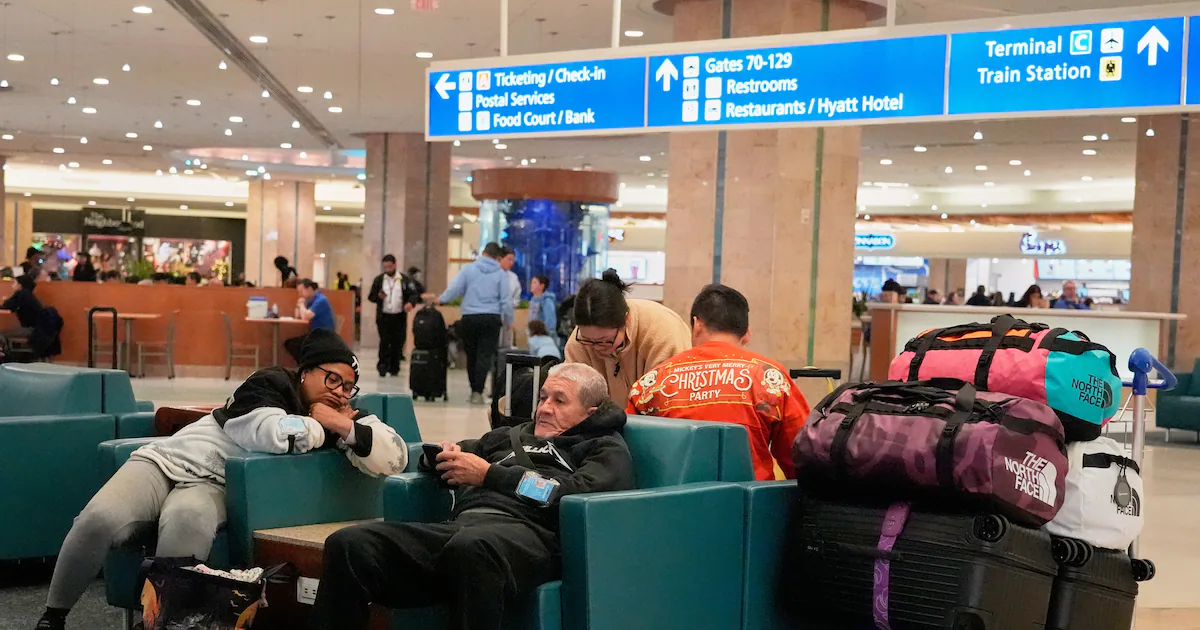Copyright Anchorage Daily News

WASHINGTON — Days before U.S. government-mandated flight cuts went into effect across domestic carriers, some airline executives privately pressed for more information on whether the safety data justified the Trump administration’s measures. On a Nov. 5 call with Federal Aviation Administration Administrator Bryan Bedford, some airline leaders asked if the agency was seeing risks that the carriers might not have been aware of, according to people familiar with the matter. Bedford, a former aviation executive, shot down any concerns over a plan to cut 10% of flights across 40 major airports, saying it was the FAA’s decision — not airlines’ — and that the reductions weren’t negotiable, said the people, who weren’t authorized to speak publicly on the discussions. What ensued was an injection of chaos into an already strained U.S. airline network. The flight restrictions, since compounded by foul weather and other system constraints, have forced carriers to cancel thousands of flights in recent days. The impact is expected to reverberate even after lawmakers forged a pact to work toward an end to the longest government shutdown in U.S. history. Although the Senate passed a temporary funding measure Monday that may soon resolve the 41-day government shutdown, it’s unclear how quickly any deal would translate into a substantial easing of the disruptions. Transportation Secretary Sean Duffy has said the government won’t reverse its flight cuts until air traffic controllers who haven’t been showing up to work are back at their facilities. More than 5 million airline passengers have been affected since the shutdown started, according to Airlines for America, a trade group representing the largest carriers. Alaska Air Group Inc. Chief Executive Officer Ben Minicucci was among the most vocal in asking for more data to justify the need for the cuts, the people said. Smaller airlines have had a harder time absorbing the reductions than larger carriers, which tend to have more flexibility in their networks. In many cases, the restrictions have hit regional flights or less-critical routes. To be sure, people familiar with the Nov. 5 call said many of the airline executives were willing to accommodate the orders because they were already seeing an uptick of flight disruptions due to air traffic controller shortages. The safety risks were heightened, given the increased spotlight on dangerous near-misses and deadly crashes earlier this year. That included a midair collision between an American Airlines Group Inc. regional jet and a U.S. Army helicopter in January, which resulted in safety investigators and lawmakers lambasting the FAA for not using their data more proactively to respond to risks in the airspace around Washington. Many of the executives were also being careful: Politically, speaking out against a directive from President Donald Trump could draw an unwanted rebuke or pressure from the White House. A representative for Alaska Air confirmed the airline participated in the call but disputed Bloomberg’s characterization of its comments, without elaborating. The company referred further questions to Airlines for America, which said “safety is always our shared top priority, and Americans should have increased confidence in our airspace because the FAA has taken these measures,” according to a statement from CEO Chris Sununu. “As our safety regulator, when the FAA says they have concerns heading into a busy travel period like Thanksgiving, airlines will do whatever is necessary to ensure the system can continue to operate safely,” said Sununu, the former Republican governor of New Hampshire. Representatives for Southwest Airlines Co. and JetBlue Airways Corp. didn’t immediately respond to requests for comment. American, Delta Air Lines Inc. and United Airlines Holdings Inc. declined to comment. Safety isn’t something the Transportation Department bargains over, a spokesperson for the department said. It trusts the nonpolitical safety team at the FAA to put the American people first, the representative said. Bedford and Duffy have said the flight cuts are intended to alleviate strain on air traffic controllers during the shutdown. Since the impasse over funding shuttered some federal operations, there has been an increase in controller staffing shortages at facilities across the country, resulting in delays at major airports, including those serving the New York area, Washington, Dallas and Atlanta. Under the FAA’s order, airlines are required to cut domestic flights 10% by Friday. Supporters have praised the FAA and Transportation Department for acting quickly to address a growing safety issue. Critics have questioned Duffy’s decision to withhold the safety data used to inform the cuts, and whether the decision was, to some degree, part of efforts to pressure Democrats to forge a deal to end the shutdown. Airlines haven’t received detailed data on the FAA’s risk assessment for the cuts, the people familiar with the matter said. Officials with the National Transportation Safety Board, including the independent agency’s Chair Jennifer Homendy, applauded the government’s decision to reduce flights during the shutdown. “THIS is safety management, the very foundation of our aviation system, and it’s the right thing to do,” she said in a post on the X social media site last week.



